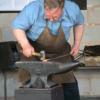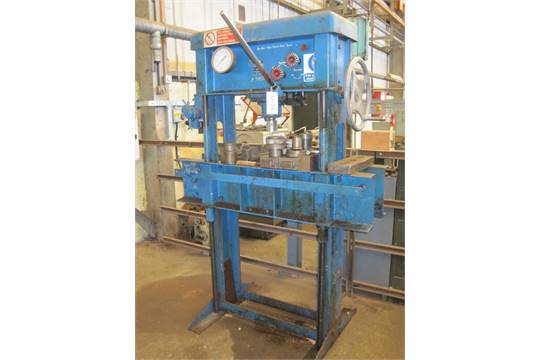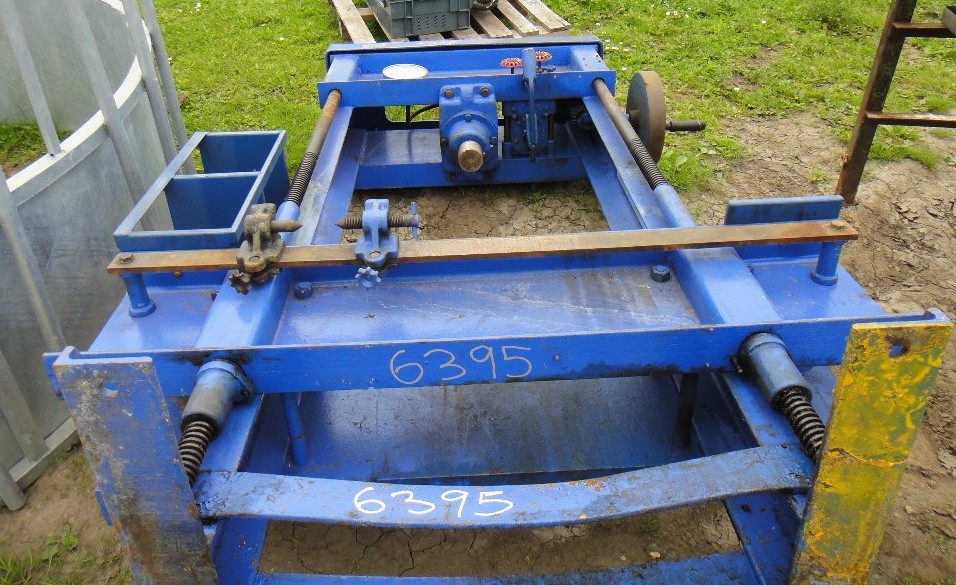-
Posts
3,598 -
Joined
-
Last visited
Content Type
Profiles
Forums
Articles
Gallery
Downloads
Events
Everything posted by John B
-
As said in previous posts, flame cut blanks and enough for 8 pairs of hinges, must have been intended for 'forged' hinges as there is a tong to turn into the hinge's barrel to suit pintle. Good buy ! Good bye,
-
They are not trammel points, they are adjustable centres to check bars/shafts for straightness after being rectified under the press,
-
I would concur with that opinion, Many years ago I was involved in making these, Mainly used for straightening shafts or pressing on interference parts in assemblies. Smaller capacity ones are available and many other similar types, but most are not as robust as these. They were that well made there are plenty still around and come up for sale regularly, Google in Laycock hydraulic press for sale No need to reinvent the wheel, just use these as a basis for your design,and adapt. If you only want a small throat, then you don't even need the adjustable table. Convert the hydrauilics to powered instead of manual, The throat on these presses is adjusted by moving the handwheel on the Right hand side which raises the table to the desired height, using the four threaded bars, I would not think you require this facilty. If you want a chat, pop into Westpoint Forge on a course day, next one is Basic Blacksmiths Skills course on 13,14,15 November, or the members day forge in on December 19th, or I can arrange a date to suit.
-
Held a toolmaking day at Westpoint Forge last week, explained basic heat treatment and how to do it in the forge. All items shown are in as forged finish, file and emery cloth to clean up for tempering Made a hot cut chisel from an old farriers rasp, annealed, forged to shape, and can be used as forged Hot punch from a coil spring, use as forged finish. Cold chisel as forged, Struck end being forged to a chamfer to help prevent spalling, Chisel's cutting end forged finish and lightly polished pre harden, then again after hardening so tempering colours can be seen, Centre punch as forged, struck end chamfered to help prevent spalling The picture of the centre punch I hope shows the tempering colour band
- 6 replies
-
- cold chisel
- centre punch
-
(and 3 more)
Tagged with:
-

An Introduction to blacksmiths tools
John B replied to John B's topic in Tools, ID, and pictorial reference
I have my original notes that I could possibly use to try to repost if the original cannot be retrieved, it is rather a large file, some 13 pagesand lots of pics so I don't know how long that would take me to do, hopefully someone can supply a copy suitable to upload here. -
Nice to see it finally finished !!!
-

Can someone explain this forge to me please
John B replied to natenaaron's topic in Solid Fuel Forges
If he is putting up videos, Why don't you ask him? -
I understand whaleboats spent long periods at sea, and carried their own blacksmiths for making and mending all the equipment in use aboard, flensing irons, harpoons, fixtures and fittings, probably a bit of dentistry etc etc, Certainly would be capable of bronze casting rowlocks, Did the rowlocks fit in sockets or just plain holes in wood ? if sockets, bronze would allow more efficient rowing when in pursuit of whales.
-
Could be oval, we call them meat and 'tater (potato) or stake and 'tiddly (Kidney) Just part of the research before development all decisions need.
-
I would like to have seen an original one, if they were wrought iron, I would think they could have been made from one piece, All just speculative of course, but different strokes for different folks, Neat useful video though.
-
Repousse can be done on pitch or lead, in either case I would expect the surrounding area on the piece to be deformed /depressed (less so on lead) if a stamp is going to be used to impose a repeatable image. IMHO, It appears the one I have seen pictured was done in two goes, outline from polished punch, inside form from a letter punch, that in itself will cause problems, double striking in same area. combine the two into one and you will have a better chance of success, smaller size the better. You need a solid backing for punching purposes.
-
More information needed, type of pie, size of pie, shape of pie, If it is a round pie, is it a different square root? You have got to have as many facts as are known/available before you can come to a result. (I think this is relevant to the thread)
-
Looks like you are using the anvil edge, as opposed to your spring tool, If forged in a spring tool at the correct heat I would expect a better more smoother finish that what yours appears to have. New material may help, will be interesting to hear your results, (anyone near you can ask or can you video and put up how you are producing this?)
-
Hi Das with regard to the twist, it may be you are rotating the piece as you are striking the top tool, thus one half is rotating whilst the necked bit is stationary between the fullering tool. Try it with a pause in rotation when you strike the top tool. I would also suspect the forging temp is low judging by the finish on the fullered area, if the tools are smooth, I would expect a better finish on that area as you can see on the centre one of the three where it is not necked in but has been struck. Hope this is of some assistance.
-

Blacksmith Instructional Content
John B replied to eggzilla's topic in Blacksmithing, General Discussion
The above is the product over three days of teaching basic skills, they just happen to produce the above items Cannot post more as Forbidden keeps arising -

Blacksmith Instructional Content
John B replied to eggzilla's topic in Blacksmithing, General Discussion
-
-

New member with a new(to me) Sheffield made anvil, help?
John B replied to ZS's topic in Anvils, Swage Blocks, and Mandrels
This may help you http://www.sheffieldhistory.co.uk/forums/index.php?/topic/7011-anvil-manufacturers/ have fun -
Shame about that Dave, not an easy task to undertake in the first place, been there, done that, lost a shed load of money, (but from the visiting blacksmiths comments all had a great time and so I regarded it as a great success), got a lot of hassle, and got the T shirt, more important, the memories and the experience.
-
Sorry if this offended but a copy and paste of >> beginners projects << into the search bar would have got there. I have trouble with English English not being the same as American English.
-
Don't know how many times he posted this questions, a search for " beginners projects" has 240 pages of information so far, guess this will be 241 now.
-
You are welcome Charles, glad to be of some use.
-

Screwdriver and chisel?
John B replied to Michael Cochran's topic in Tools, ID, and pictorial reference
If the shanks of the chisels are octagonal, then they should be tool steel


